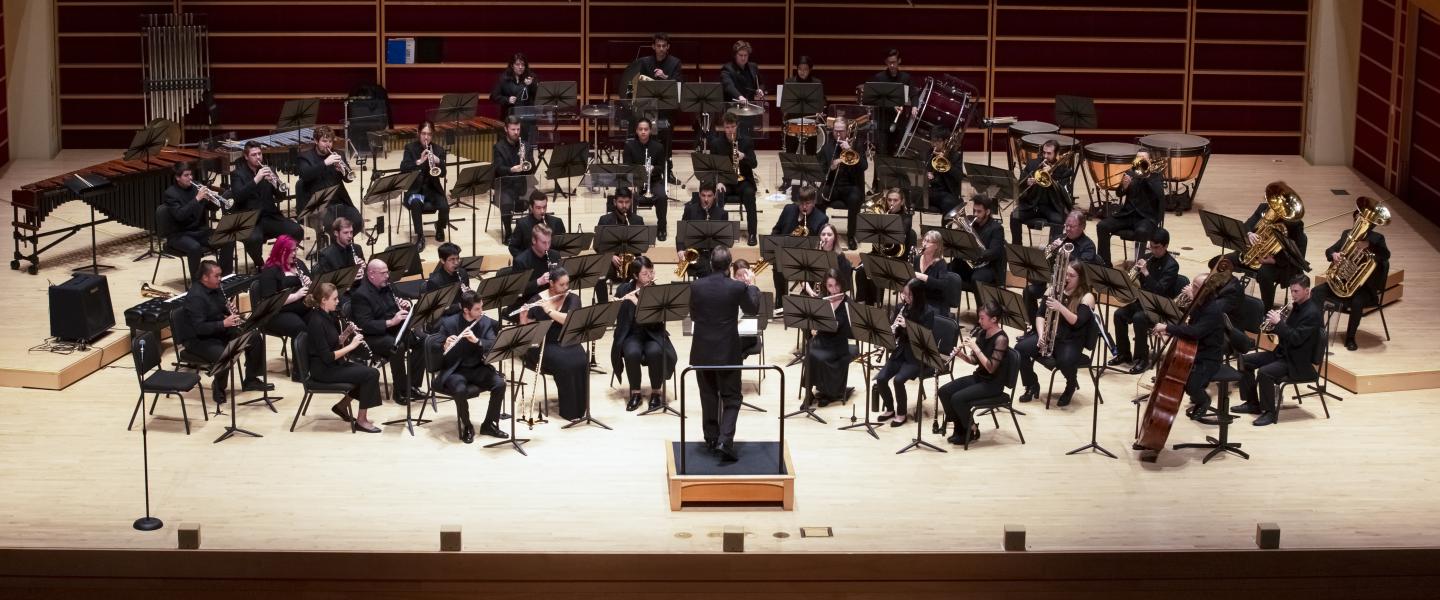Here's the full, searchable list of music courses. Use the two submenus to search by Course Rotation or Semester.
Study of basic melodic and harmonic materials commonly used in jazz. Application through arranging projects for small jazz groups.
Continuation of Ear Training I. Sight-singing progresses to two-, three-, and four-part music, incorporating the most common chromatic tones. Dictation focuses upon triad inversions and seventh chords, continuing development of melodic and rhythmic dictation skills, and the introduction of polyphonic dictation. Listening skills are pursued using great works.
The Concert Band is an intermediate level ensemble that provides students with opportunities to continue performing on woodwind, brass or percussion instruments. Enrollment is open to all SSU students and community members, regardless of skill level. No audition is required. The ensemble typically performs 1-2 concerts per semester. May be repeated for credit.
An introductory course with lectures and demonstrations dealing with classical European music from the Middle Ages to contemporary music. Satisfies GE Area C1 (History of the Fine Arts).
History of Western music from the ancient world to 1750. The course examines the evolution of musical genres and styles, from the ancient Greeks and the earliest plainchant of the Medieval church to the intricate polyphony of the High Baroque including the music of Bach and Handel. Listening and analytical study of specific compositions requires the student to have a working knowledge of musical notation and theory.
A hands-on survey of hardware and software resources for music notation, midi sequencing, digital recording and synthesizer operation. The focus will be on building basic skills for using these tools in real-world situations. Required for Music Education students; open only to Music majors.
This course explores the connections between music and the sociopolitical and cultural trends of a given era, or theme involving the consideration of musical compositions, historical texts, and performance practice. Satisfies GE Area C2. Only one course numbered 273 in the Arts & Humanities will be considered for credit.
Basic voiceleading techniques for improvising on common functional chord progressions: blues, "Rhythm" changes, and various "standards."
An introduction to jazz improvisation at the keyboard. Emphasis is placed on developing skill in reading lead sheets, in chord substitution and voicing at the keyboard, and in creating an improvised "piano trio" texture.
CIP involves students in basic community problems, performing such tasks as tutoring, coaching, and performing for hospitals and schools. Students taking CIP through the Music Department must arrange for supervision by a Music Department advisor. Students in the Music Education concentration must see their advisor about special requirements. Cr/NC only.

